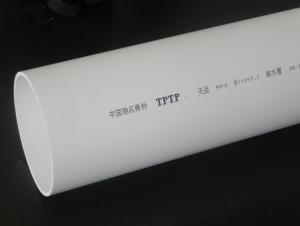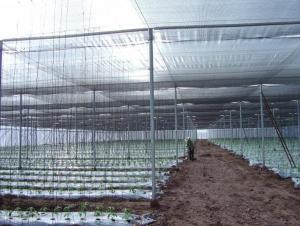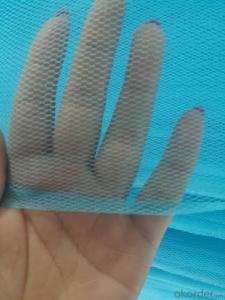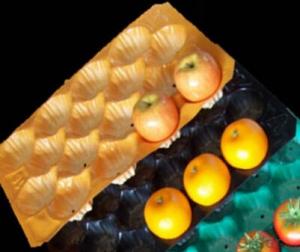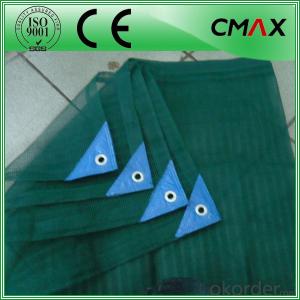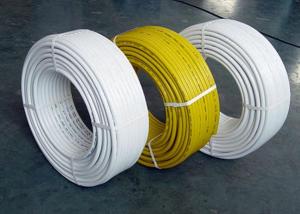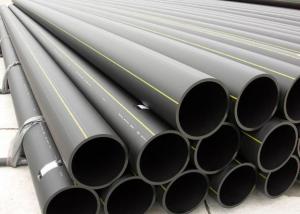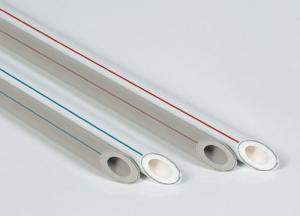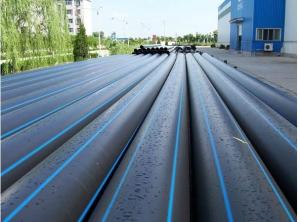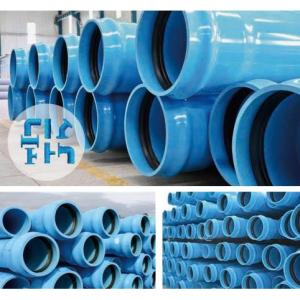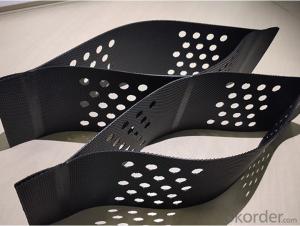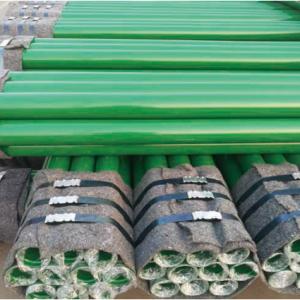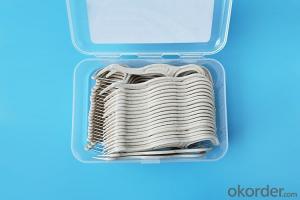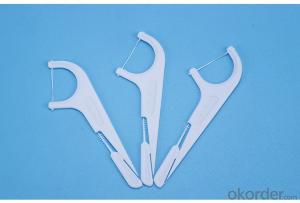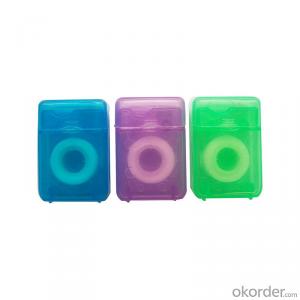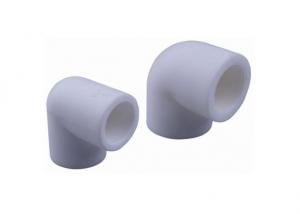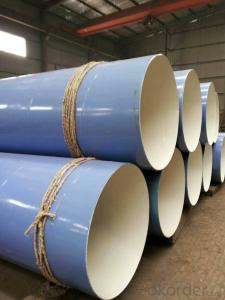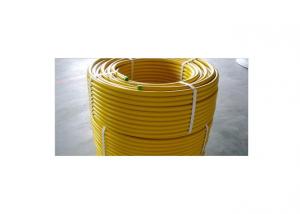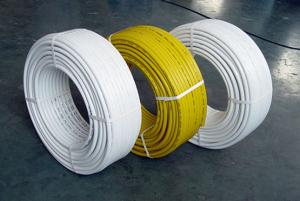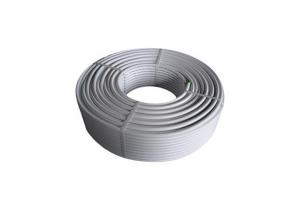PVC drainage pipe fittings
- Loading Port:
- China Main Port
- Payment Terms:
- TT OR LC
- Min Order Qty:
- -
- Supply Capability:
- 30000米 m/month
OKorder Service Pledge
OKorder Financial Service
You Might Also Like
PVC pipe is the health grade polyvinyl chloride (PVC) resin as the main raw material, adding proper amount ofstabilizer, lubricant, bulking agent, hyperchromic agent by plastic extrusion molding and injection molding machine,cooling, curing, shaped by process, inspection, packaging, in order to complete the pipes, pipe fittings production.
1 pipe surface hardness and tensile strength and high safety coefficient, pipeline.
2 good ageing resistance, the normal service life of up to 50 years.
3 pipeline of inorganic acid, alkali, salt, excellent corrosion resistance, suitable for industrial wastewater discharge and transport.
The 5 material has high oxygen index, selfextinguishing.
6 pipe line expansion coefficient is small, is affected by the temperature 0.07mm/ ℃, small deformation.
Thermal conductivity and low modulus of elasticity, anti frozen performance compared with cast iron drainage pipe.Thermal conductivity and low modulus of elasticity, anti frozen performance compared with cast iron drainage pipe.
The 7 pipes, pipe fittings are connected by adhesive, the construction method is simple, convenient operation, high installation efficiency.
- Q:How do composite pipes compare to fiberglass pipes?
- Composite pipes and fiberglass pipes are both types of reinforced plastic pipes. However, composite pipes are generally considered to be superior to fiberglass pipes in terms of strength, durability, and resistance to corrosion. Composite pipes are made by combining different materials such as fiberglass, carbon fiber, or Kevlar with a polymer matrix, resulting in a stronger and more rigid structure. They can withstand higher pressure and temperature conditions, making them suitable for a wider range of applications. Additionally, composite pipes offer better chemical resistance and are less prone to degradation over time compared to fiberglass pipes.
- Q:What is the flow velocity limitation of composite pipes?
- The flow velocity limitation of composite pipes depends on various factors such as the type of composite material used, the diameter of the pipe, and the specific application. However, composite pipes generally have a higher flow velocity limitation compared to traditional metal pipes due to their superior strength and flexibility.
- Q:Can composite pipes be used for rainwater harvesting systems?
- Yes, composite pipes can be used for rainwater harvesting systems. Composite pipes are made from a combination of materials such as fiberglass, resin, and other reinforcing materials, which make them highly resistant to corrosion, lightweight, and durable. These properties make composite pipes suitable for rainwater harvesting systems as they can effectively transport and store collected rainwater without the risk of degradation or leakage. Additionally, composite pipes can be easily customized to fit specific requirements and are compatible with various rainwater harvesting components such as filters, pumps, and storage tanks.
- Q:Can composite pipes withstand high temperatures?
- Yes, composite pipes are designed to withstand high temperatures. They are made from materials such as fiberglass, carbon fiber, or other high-temperature resistant polymers, which provide excellent thermal stability and can withstand extreme heat without deformation or degradation.
- Q:Do composite pipes require insulation for hot water applications?
- Yes, composite pipes generally require insulation for hot water applications. Insulation helps to minimize heat loss and maintain the desired temperature of the hot water, improving energy efficiency and reducing energy costs.
- Q:Can composite pipes be used for hydroelectric power plants?
- Yes, composite pipes can be used for hydroelectric power plants. Composite pipes are often preferred in hydroelectric power plants due to their high strength-to-weight ratio, corrosion resistance, and durability. These pipes are capable of withstanding the high pressure and flow rates associated with hydroelectric power generation, making them a suitable choice for conveying water in these plants.
- Q:Construction technology of internal and external double hot melt joint of PSP steel plastic composite pipe
- The whole circle of treatment on Dn32 and below Dn32 specifications of the pipe end to be connected to the pipe end; Dn40 and Dn40 and above if not round, it should be cut off at the end of.
- Q:Can composite pipes be used in earthquake-prone areas?
- Yes, composite pipes can be used in earthquake-prone areas. Composite materials, such as fiberglass reinforced plastic (FRP), offer excellent resistance to seismic activity due to their high strength-to-weight ratio and flexibility. These properties allow composite pipes to withstand ground movements and vibrations during earthquakes without experiencing significant damage or failure. Additionally, composite pipes have been proven to be more resistant to corrosion, offering a long-lasting and reliable solution for water and wastewater systems in earthquake-prone areas.
- Q:How can the triode be judged to form a composite tube?
- There are four kinds of two triode compound, see the following figure, as long as there are two transistors, it may form a composite tube.
- Q:What are the different types of composite pipes available in the market?
- There are several types of composite pipes available in the market, including fiberglass reinforced plastic (FRP) pipes, carbon fiber reinforced polymer (CFRP) pipes, and reinforced thermoplastic pipes (RTP).
1. Manufacturer Overview |
|
|---|---|
| Location | |
| Year Established | |
| Annual Output Value | |
| Main Markets | |
| Company Certifications | |
2. Manufacturer Certificates |
|
|---|---|
| a) Certification Name | |
| Range | |
| Reference | |
| Validity Period | |
3. Manufacturer Capability |
|
|---|---|
| a)Trade Capacity | |
| Nearest Port | |
| Export Percentage | |
| No.of Employees in Trade Department | |
| Language Spoken: | |
| b)Factory Information | |
| Factory Size: | |
| No. of Production Lines | |
| Contract Manufacturing | |
| Product Price Range | |
Send your message to us
PVC drainage pipe fittings
- Loading Port:
- China Main Port
- Payment Terms:
- TT OR LC
- Min Order Qty:
- -
- Supply Capability:
- 30000米 m/month
OKorder Service Pledge
OKorder Financial Service
Similar products
New products
Hot products
Related keywords
